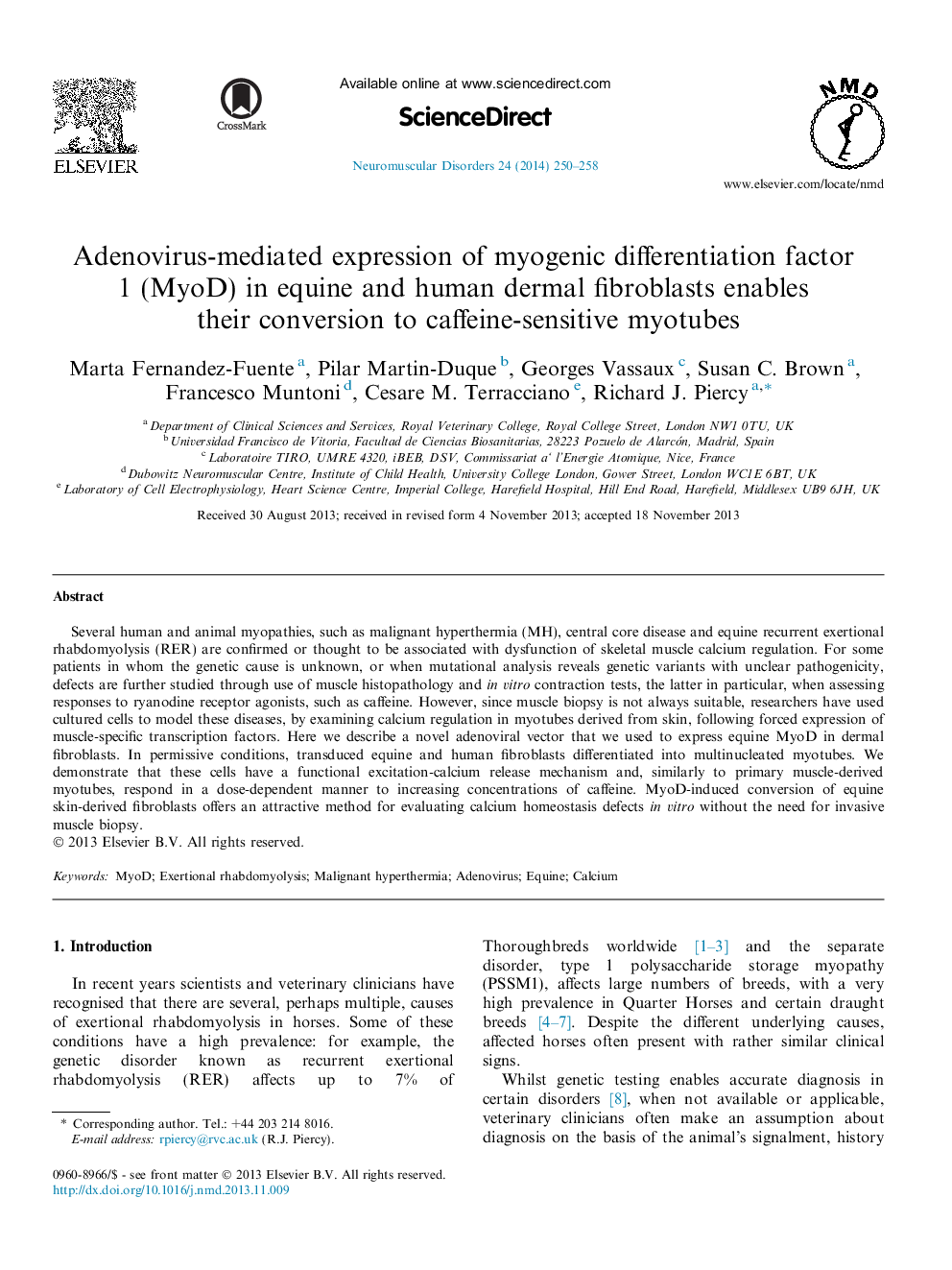| Article ID | Journal | Published Year | Pages | File Type |
|---|---|---|---|---|
| 6041433 | Neuromuscular Disorders | 2014 | 9 Pages |
Abstract
Several human and animal myopathies, such as malignant hyperthermia (MH), central core disease and equine recurrent exertional rhabdomyolysis (RER) are confirmed or thought to be associated with dysfunction of skeletal muscle calcium regulation. For some patients in whom the genetic cause is unknown, or when mutational analysis reveals genetic variants with unclear pathogenicity, defects are further studied through use of muscle histopathology and in vitro contraction tests, the latter in particular, when assessing responses to ryanodine receptor agonists, such as caffeine. However, since muscle biopsy is not always suitable, researchers have used cultured cells to model these diseases, by examining calcium regulation in myotubes derived from skin, following forced expression of muscle-specific transcription factors. Here we describe a novel adenoviral vector that we used to express equine MyoD in dermal fibroblasts. In permissive conditions, transduced equine and human fibroblasts differentiated into multinucleated myotubes. We demonstrate that these cells have a functional excitation-calcium release mechanism and, similarly to primary muscle-derived myotubes, respond in a dose-dependent manner to increasing concentrations of caffeine. MyoD-induced conversion of equine skin-derived fibroblasts offers an attractive method for evaluating calcium homeostasis defects in vitro without the need for invasive muscle biopsy.
Related Topics
Life Sciences
Neuroscience
Developmental Neuroscience
Authors
Marta Fernandez-Fuente, Pilar Martin-Duque, Georges Vassaux, Susan C. Brown, Francesco Muntoni, Cesare M. Terracciano, Richard J. Piercy,
